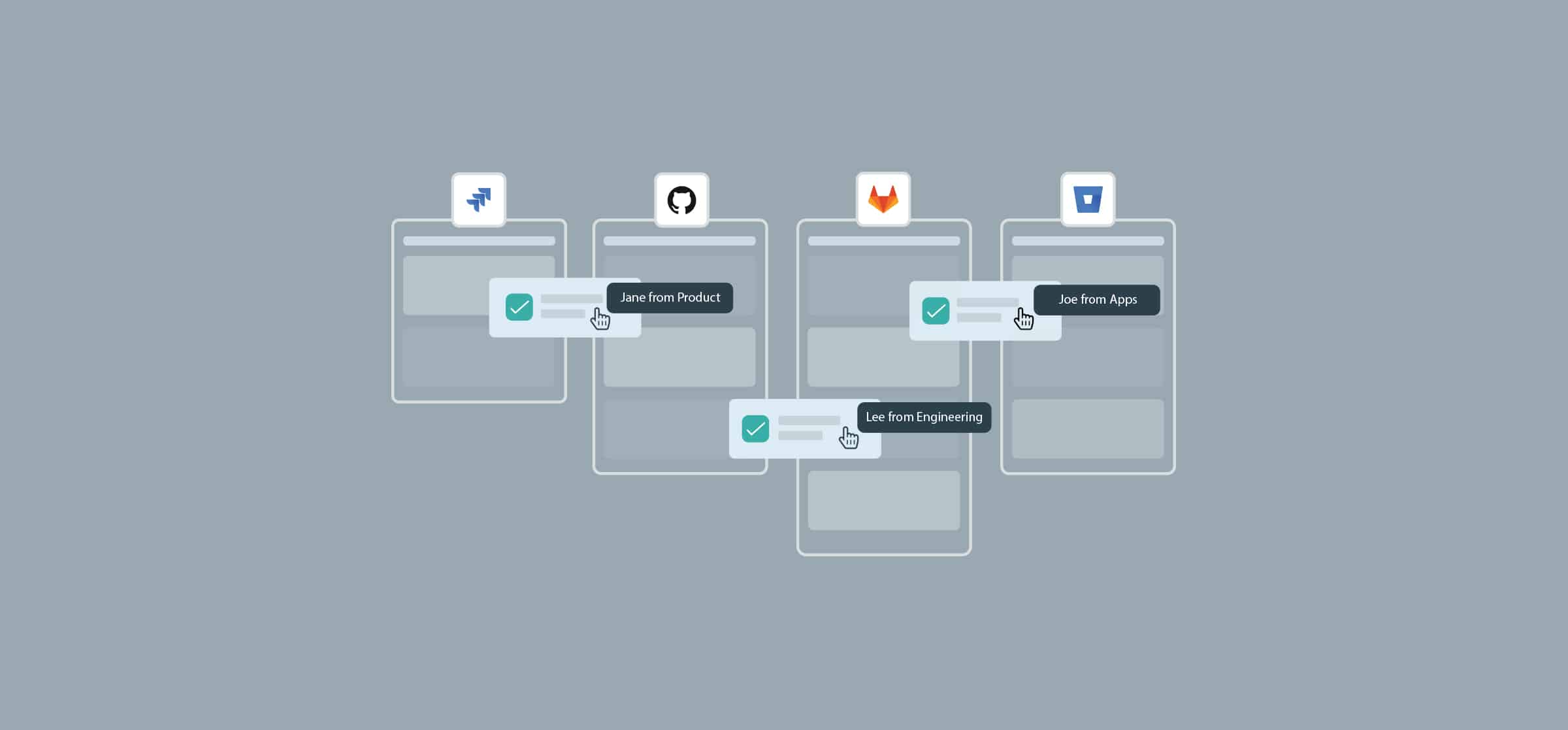How to Optimize Software Development Backlog Workflows With Unito
A development backlog is dubiously useful when it’s messy. But how can it not be? Developers are incredibly busy. Development roadmaps are filled with launches and updates, and sometimes something breaks and you have to spend an entire day fixing it. How can you make time to clean up a development backlog when there are so many other tasks to prioritize?
With Unito, you can streamline collaboration, communication, and organization. You can automate away the clutter instead of wasting time cleaning up tasks. Here’s how it’s done.
A development backlog workflow without Unito
Developers get requests from multiple teams across communication channels. A marketer might send a message on Slack asking for a landing page. A project manager will create a request in Trello, Asana, or another work management tool, which then has to be copied into whatever tool the developers are using. And then, at the end of the day, a salesperson might make a request to their boss during a chat around the water cooler, and that boss passes it on to the dev team’s lead, who then passes it down to their team.
It can make for a cluttered, chaotic backlog, fed from multiple sources, often with incomplete information. Even if the developers do their best to keep it organized, some requests will come in with missing information, unrealistic due dates, or they’ll be duplicates of a request received days earlier from someone else.
Some development teams have a dedicated person who keeps these tasks updated and accurate. That means a ton of busywork copying information from multiple sources and consolidating it into a central system. Sometimes this person will have to go chase the requester for clarification — or missing information. It can take hours every single week.
Planning sprints from a cluttered backlog can be just as messy. Every request has to be evaluated and double-checked to make sure everything’s there before it can be added to a sprint. Everything takes longer, requires more meetings, and is just plain frustrating.
Where Unito comes in
The hiccups in this workflow are mostly because of the variety of channels in play. Most companies use a host of tools, which create silos and keep information from getting from one place to another in a seamless way. That’s why you’ll run into duplicate requests and missing information that force developers to run around for updates.
With Unito, you can integrate your work management tools, creating a single collaborative environment. Instead of trying to force multiple teams into a single tool — or forcing someone to fill the gaps between tools — you can rely on automation and integration to create seamless workflows.
A request made in one tool can be completely transferred to whichever tool the developers use. Comments, attachments, and most other fields are synced in real-time, meaning everyone can work from their tool while staying in the loop.
And if you don’t like meetings? Making information accurate across tools reduces the need for lengthy, repeated status meetings.
How to optimize the development backlog workflow with Unito
For this example, let’s assume we have a mobile development team working in Jira. They have a Jira project dedicated to troubleshooting and bug fixing. Teams from across the company add bugs and issues into their work tool — Asana — which are then synced over to a Jira backlog. Developers use this backlog to plan their sprints.
So how is this set up in Unito?
Set up dedicated backlog request projects in each tool
Before you set up your workflow in Unito, you have to get all your ducks in a row. Unito uses deep mapping to match Asana projects with Jira projects. By creating dedicated backlog requests in Asana, your teams have a centralized place to put their requests, knowing they’ll reach the development team.


You’ll want to be sure to create sections that track requests along the development track — from requested, to in progress, to done. These can then be mapped to the process in the development project.
Create a workflow
Building a workflow in Unito gives you the ability to easily connect multiple projects. This is how you’ll make sure every development request winds up in the Jira project.

When you build your flows, you have access to options that allow you to quickly filter incoming issues. For instance, you could set up a labeling system so you always know which team an issue is coming from. So if you set up tags in Asana to mark which team the requester is from…


You can then filter work items coming from Asana projects to match those tags to labels in Jira. Note that, for this to work, the label in Jira has to match the Asana tag exactly, down to the right casing.

Communicate seamlessly across tools
Now that you’ve set up your workflow, you can use Jira issues as a direct communication line between developers and the requesters. Update requests can be made as a comment in Asana and will show up in the Jira issue. Likewise, developers can send feedback requests or any questions they have directly in Jira issue.

With this in place, you can turn updates and cross-team communication into a self-serve system. Everyone is empowered to reach out to their colleagues, knowing they’ll get what they need.
Declutter your development backlog
Your development backlog doesn’t have to be cluttered and difficult. You can centralize and consolidate requests from across the company so you don’t have to chase updates come sprint-planning time. Developers and stakeholders can communicate and access all of the information they need from their tool of choice.
What’s next?
1. Ready to start? Try Unito free for 14 days!
2. See the power of Unito in action.
3. Read more about what Unito can do for your workflow.
